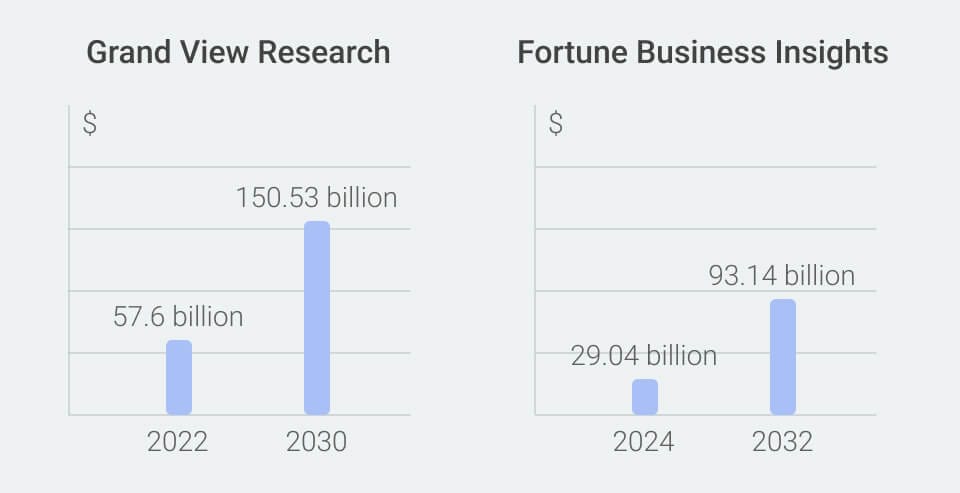The global security landscape is undergoing a profound transformation driven by the convergence of intelligence, connectivity, and data. What was once a traditional, reactive industry centered on alarms and surveillance has evolved into a proactive, AI-powered ecosystem designed to predict, prevent, and personalize protection. The era of smart security has arrived — and it is reshaping not only homes and businesses but the very definition of safety itself.
A Market Growing with Intelligence
According to Grand View Research, the global smart security market was valued at USD 57.6 billion in 2022 and is expected to reach USD 150.53 billion by 2030, growing at a CAGR of 13.1%. Fortune Business Insights further projects the smart home security segment to grow from USD 29.04 billion in 2024 to USD 93.14 billion by 2032, marking a CAGR of 15.9%. Behind these figures lies a clear message: consumers and enterprises worldwide are increasingly prioritizing intelligent safety solutions that integrate seamlessly into connected environments.

The rapid adoption of IoT, cloud computing, and AI algorithms has transformed how security systems operate. Modern devices now combine sensing, analytics, and communication in real time — enabling systems to detect unusual behaviors, differentiate between threats and nonthreats, and even learn from user habits. This represents a fundamental leap from passive alert systems to intelligent guardians.
From Devices to Ecosystems
In the past, the security industry relied on isolated products — cameras, sensors, and alarms working independently. Today, smart security is about ecosystem synergy. Platforms integrate motion detection, door sensors, video analytics, and mobile control under a unified architecture. Through wireless protocols such as Zigbee, Z-Wave, Wi-Fi, and RBF, these devices communicate dynamically and offer cross-brand interoperability.
The shift from hardware sales to service-based models — including remote monitoring, cloud storage, and subscription analytics — is redefining business models. This trend is reflected in the Security Industry Association’s ‘Megatrends 2025’ report, which identifies AI integration, cloud connectivity, and service transformation as the top three forces driving the future of security.
AI and Predictive Safety
Artificial intelligence is no longer an enhancement; it is the core of next-generation protection. AI-powered cameras now detect not only motion but also context — distinguishing between humans, animals, and vehicles. Advanced systems employ edge computing to process data locally, ensuring faster responses and improved privacy. Predictive algorithms analyze historical activity to anticipate potential risks, transforming security from a reactive defense to an intelligent prediction network.
For consumers, this means greater convenience and trust. For businesses, it means efficiency, scalability, and actionable insights. As cities evolve toward smart urban infrastructures, AI-driven surveillance and automation will become essential in public safety, energy optimization, and traffic control.
Design Meets Functionality
Modern consumers demand not only safety but also aesthetic integration. Security products are no longer hidden in corners — they are part of the interior design. Manufacturers now emphasize minimalist forms, eco-friendly materials, and modular construction that blend seamlessly into smart homes. Wireless technologies have further reduced installation barriers, making smart protection accessible and elegant.
Sustainability and Compliance
As the global market expands, sustainability and compliance are becoming strategic priorities. Eco-conscious production, RoHS and CE certifications, and energy-efficient designs are now basic requirements for competitive entry, particularly in European markets. The push toward low-power operation and recyclable materials aligns with the broader movement toward green technology.
The Future Outlook
By 2030, the smart security industry will not only grow in scale but also in intelligence. The integration of AIoT (Artificial Intelligence of Things), edge-cloud collaboration, and data-driven analytics will create systems capable of self-optimization and autonomous learning. Security will no longer be a standalone product category — it will become a fundamental pillar of the smart living ecosystem, connecting homes, buildings, vehicles, and cities.

Roombanker stands at the forefront of this transformation. By combining technological innovation, design excellence, and user-centric experience, Roombanker is redefining the future of smart protection.
From intelligent hubs to integrated sensing networks, our solutions are built to deliver safety that adapts, learns, and evolves with people’s lives.
Our mission is clear — Roombanker: Room Security You Can Bank On.
Through continuous innovation and collaboration with global partners, Roombanker is shaping a world where technology and trust work hand in hand to protect what matters most.
